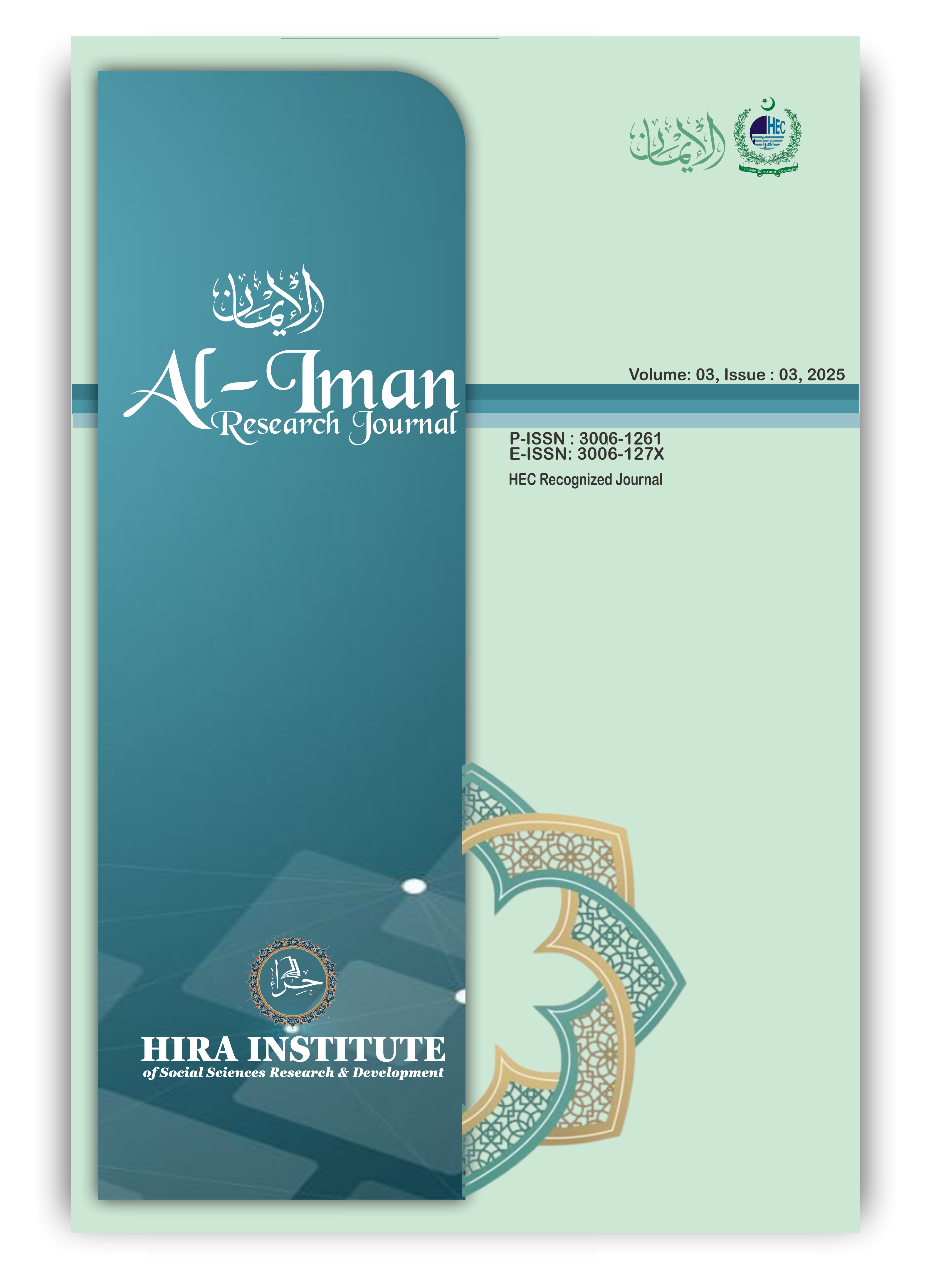Selective Visibility of Western Media: A Critical Discourse Analysis of AI’s Responses on the Palestine and Ukraine Conflicts
DOI:
https://doi.org/10.63283/IRJ.03.03/15Keywords:
AI, Western media, selective visibility, Palestine–Israel conflict, Russia–Ukraine War, Critical Discourse Analysis (CDA)Abstract
This study investigates how artificial intelligence (AI) discerns and reproduces the patterns of selective visibility in Western media coverage of two major global conflicts: Palestine–Israel and Russia–Ukraine. The primary aim is to examine how a large language model (LLM) interprets and evaluates Western media discourse through its generated responses. Employing a qualitative textual analysis, AI-generated outputs were treated as the primary data. A purposive set of prompts was submitted to the model, and the responses were analyzed using the theoretical framework of Critical Discourse Analysis (CDA). The analysis was guided by four central CDA concepts: power and ideology, lexical choice and agency, silences and foregrounding, and recontextualization. The findings demonstrate that AI is capable of identifying asymmetries in Western media representation. It exposes double standards in the framing of casualties, recognizes silences surrounding occupation and blockade, yet often mirrors agent-erasing language when describing Palestinian deaths, while employing more emotive and agentive expressions for Ukrainian and Israeli victims. Furthermore, its recontextualization of narratives frames the Palestinian struggle predominantly through security discourse, whereas Ukrainian resistance is depicted as a matter of sovereignty and heroism. The study concludes that while AI can critically engage with ideological patterns in media discourse, it simultaneously reflects the biases embedded within dominant Western epistemologies. Future research could extend this inquiry to multilingual datasets, different model versions, and diverse geopolitical contexts to assess the persistence and transformation of these discursive asymmetries.
References
Ahmad, R. (2023). Examining lexical choices in framing the Palestine–Israel conflict on news channels.
Amer, M. (2017). Critical discourse analysis of war reporting in the international press: The case of the Gaza war of 2008–2009. Palgrave Communications. https://doi.org/10.1057/s41599-017-0015-2 DOI: https://doi.org/10.1057/s41599-017-0015-2
Borgström, F., & Pettersson, M. (2025). Ontological security and Western media: A comparative study of framing in Ukraine and Gaza
Elmasry, M. H., & co-authors. (2021). TikTok and competing visual narratives during the 2021 Gaza conflict.
Entman, R. M. (2004). Projections of power: Framing news, public opinion, and U.S. foreign policy. University of Chicago Press. DOI: https://doi.org/10.7208/chicago/9780226210735.001.0001
Fairclough, N. (2003). Analysing discourse: Textual analysis for social research. Routledge. DOI: https://doi.org/10.4324/9780203697078
Fairclough, N. (2010). Critical discourse analysis: The critical study of language (2nd ed.). Routledge.https://doi.org/10.4324/9781315834368 DOI: https://doi.org/10.4324/9781315834368
Hameleers, M. (2025). The visual nature of information warfare: The construction of partisan claims on truth and evidence in the context of wars in Ukraine and Israel/Palestine. Journal of Communication, 75(2), 90–100. DOI: https://doi.org/10.1093/joc/jqae045
Kareem, A. H., & Najm, Y. M. (2024). A critical discourse analysis of the biased role of Western media in the Israeli-Palestinian conflict. Journal of Language Studies, 8(6), 200–215. DOI: https://doi.org/10.25130/Lang.8.6.12
Kotišová, J. (2024). The epistemic injustice in conflict reporting: Reporters and “fixers” covering Ukraine, Israel, and Palestine. Journalism, 25(6), 1290–1309. DOI: https://doi.org/10.1177/14648849231171019
Machin, D., & Mayr, A. (2012). How to do critical discourse analysis: A multimodal introduction. Sage.
Maulana, M. A. (2024). A comparative analysis of Western nations’ actions in the Russia-Ukraine and Israel–Palestine conflicts. Nation State: Journal of International Studies, 7(1), 29–52. DOI: https://doi.org/10.24076/nsjis.v7i1.1558
McKee, A. (2003). Textual analysis: A beginner’s guide. Sage. DOI: https://doi.org/10.4135/9780857020017
Mäenpää, O. A. (2022). A critical discourse analysis on the reporting of the Ukrainian refugees fleeing the Russian invasion: The notions of Eurocentrism and othering in mainstream media. DiVA portal.
Munir, T. (2024). Western print media and impartiality: Palestine–Israel war and Ukraine–Russia war.
Richardson, J. E. (2007). Analysing newspapers: An approach from critical discourse analysis. Palgrave Macmillan. DOI: https://doi.org/10.1007/978-0-230-20968-8_7
Sarwar, M., & Qasim, H. M. (2025). Framing the Israel–Palestine conflict in media headlines: A comparative analysis of Western and Eastern perspectives using appraisal and transitivity frameworks. Journal of Applied Linguistics and TESOL, 8(3), 1919–1931.
Taylor, C. (2013). Searching for the language of solidarity: A corpus-based critical discourse analysis of “solidarity” in news discourse. Discourse & Society, 24(6), 730–748.
Van Dijk, T. A. (2008). Discourse and power. Palgrave Macmillan. DOI: https://doi.org/10.1007/978-1-137-07299-3
Van Leeuwen, T. (2008). Discourse and practice: New tools for critical discourse analysis. Oxford University Press. DOI: https://doi.org/10.1093/acprof:oso/9780195323306.001.0001
Zubair, M., Zahid, M., & Aleem, N. (2025). Language as a Resource for Survival: A Pragmatic Analysis of Beggars’ Discourse in Islamabad. Journal of Arts and Linguistics Studies, 3(3), 5085-5103. https://doi.org/10.71281/jals.v3i3.457 DOI: https://doi.org/10.71281/jals.v3i3.457






